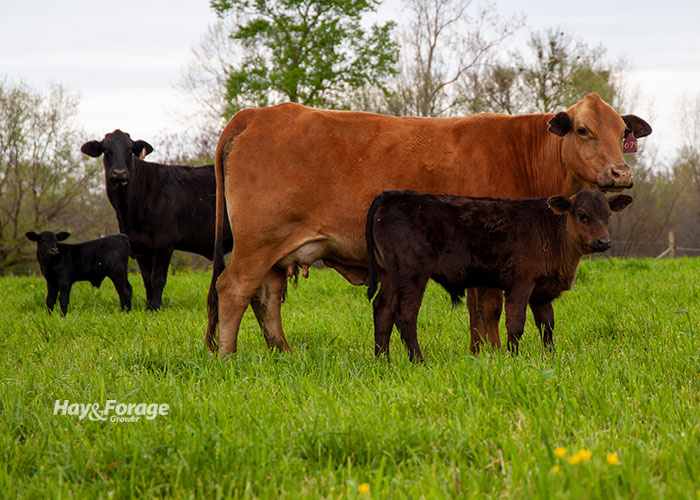
No matter the type of operation, high feed, fuel, and fertilizer prices have producers of every kind asking how they can cut back on expenses. Luckily for cow-calf producers, creep grazing might be an answer to this question.
Creep grazing is like creep feeding in that it provides supplemental feed to nursing calves. Mark Johnson, beef cattle breeding specialist with Oklahoma State University Extension, says research shows grain-based creep feeding can improve calf weaning weights by 20 to 80 pounds. However, the value of this added weight doesn’t typically offset the price of feed, labor, and equipment.
Johnson notes creep feeding isn’t always implemented for economic reasons – sometimes it is used to benefit marketing and to express animals’ genetic potential for growth. In contrast, creep grazing is often a financial decision because it is a more cost-effective solution.
“Creep grazing programs can produce additional calf gains using forage rather than the traditional grain-based creep diets,” Johnson explains. “There are many ways to adapt this system to each individual situation, but the bottom line is that it must be profitable.”
Grazing management
To ensure profitability, graze forages that are readily available. Johnson says legumes, pearl millet, and sorghum-sudangrass are ideal species to graze in the summer. When temperatures cool in the fall, utilize crops such as rye, oats, wheat, or ryegrass.
Give calves access to an area to graze but don’t allow cows to enter. Johnson suggests building a creep gate with entrance slots approximately 18 inches wide. Install the creep gate in the fence line or at a regular gate separating the creep grazing area from the main pasture. Electric wire can also be used. Johnson recommends placing a single strand of wire 36 to 42 inches above the ground so calves can pass under to the grazing area but cows cannot.
Forage quality is another factor in creep grazing efficiency. Although research shows daily gains from creep grazing are usually between 10% and 20% greater than calves that are not creep grazing, Johnson notes more variable ranges of 0% to 50% have been reported. “This underscores the effects that pasture quality and quantity exert on gains of creep-grazed calves,” he states.
A more indirect benefit of creep grazing is that calves do not get as fat as those on grain-based creep feeding programs. Johnson says animals with an unlimited supply of high-energy feed can receive price discounts, and replacement heifers can experience reduced milk production.
Even though creep grazing can lower feeding costs, the practice doesn’t necessarily guarantee better cow weights or body condition. Johnson says calves prefer milk first, then grain-based creep feed, and then forage. Therefore, they will continue to consume all available milk before they decide to graze.

Amber Friedrichsen is the 2022 Hay & Forage Grower editorial intern. She currently attends Iowa State University where she is majoring in agriculture and life sciences education-communications and agronomy. Friedrichsen grew up on her family’s diversified crop and livestock farm near Clinton, Iowa.

